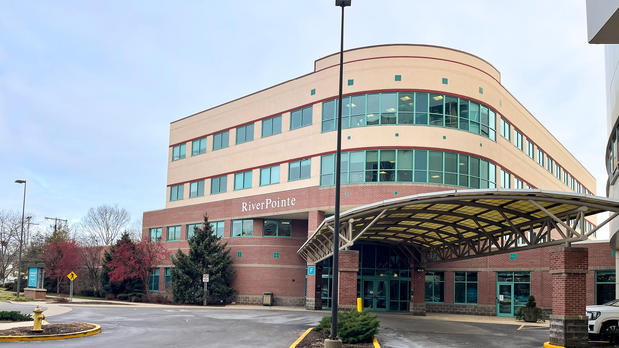Dystonia
Find out more about this painful movement disorder and ways to improve muscle function.
Overview
Dystonia is a movement disorder that causes the muscles to contract. This can cause twisting motions or other movements that happen repeatedly and that aren't under the person's control.
When the condition affects one part of the body, it's called focal dystonia. When it affects two or more areas of the body next to each other, it's called segmental dystonia. When dystonia affects all parts of the body, it's known as general dystonia. The muscle spasms can range from mild to more serious. They may be painful, and they can affect the person's ability to complete daily tasks.
There's no cure for dystonia, but medicines and therapy can improve symptoms. Surgery is sometimes used to disable or regulate nerves or certain brain regions in people with serious dystonia.
Symptoms
Dystonia affects different people in different ways. Muscle spasms might:
- Begin in a single area, such as your leg, neck or arm. Focal dystonia that begins after age 21 usually starts in the neck, arm or face. Although it tends to remain in the single area, it may spread to a neighboring area of the body.
- Occur during a specific action, such as writing by hand.
- Worsen with stress, fatigue or anxiety.
- Become more noticeable over time.
Areas of the body that can be affected include:
- Neck. When the neck muscles are involved, it's called cervical dystonia. Contractions cause the head to twist and turn to one side. Or the head may pull forward or backward. Cervical dystonia sometimes causes pain.
- Eyelids. When muscles controlling eye blinks are involved, it's called blepharospasm. Rapid blinking or muscle spasms that cause your eyes to close make it hard to see. The muscle spasms usually aren't painful. They might increase in bright light or while reading, watching TV or interacting with people. They also might increase under stress. The eyes might feel dry, gritty or sensitive to light.
- Jaw or tongue. When the muscles of the jaw and tongue are affected, it's called oromandibular dystonia. It can cause slurred speech, drooling, and trouble chewing or swallowing. This type of dystonia can be painful. It often occurs with cervical dystonia or blepharospasm.
- Voice box and vocal cords. When the voice box or vocal cords are affected, it's called laryngeal dystonia. It can cause a strained or whispering voice.
- Hand and forearm. Some types of dystonia occur only while doing an activity over and over, such as writing or playing a musical instrument. These are known as writer's dystonia and musician's dystonia. Symptoms usually don't happen when the arm is at rest.
When to see a doctor
Early symptoms of dystonia often are mild, occasional and linked to a specific activity. See a member of your healthcare team if you're having muscle contractions that you can't control.
Causes
The exact cause of dystonia isn't known. But it might involve changes in communication between nerve cells in several regions of the brain. Some forms of dystonia are passed down in families.
Dystonia also can be a symptom of another disease or condition, including:
- Parkinson's disease.
- Huntington's disease.
- Wilson's disease.
- Traumatic brain injury.
- Birth injury.
- Stroke.
- Brain tumor or certain conditions that develop in some people with cancer, known as paraneoplastic syndromes.
- Lack of oxygen or carbon monoxide poisoning.
- Infections, such as tuberculosis or encephalitis.
- Reactions to certain medicines or heavy metal poisoning.
Risk factors
Your risk for dystonia increases if you have a family history of the movement disorder. Women also have a higher risk. They have dystonia twice as often as men do.
Another risk factor for dystonia is having a condition that causes dystonia, such as Parkinson's disease or Huntington's disease.
Complications
Depending on the type of dystonia, complications can include:
- Physical disabilities that affect daily activities or specific tasks.
- Trouble with vision.
- Trouble moving the jaw, swallowing or speaking.
- Pain and fatigue from the constant contraction of your muscles.
- Depression, anxiety and social withdrawal.
Diagnosis
To diagnose dystonia, your healthcare team starts with a medical history and physical exam.
To look for conditions that may be causing your symptoms, you might need:
- Blood or urine tests. These tests can reveal signs of toxins or of other conditions.
- MRI or CT scan. These imaging tests look for changes in your brain, such as tumors or evidence of a stroke.
- Electromyography (EMG). This test measures the electrical activity within muscles.
- Genetic testing. Some forms of dystonia are associated with certain genes. Knowing if you have these genes can help guide treatment.
Treatment
To manage dystonia, your healthcare professional might recommend a combination of medicines, therapy or surgery.
Medicines
Injections of botulinum toxin (Botox, Dysport, others) into specific muscles might reduce or stop your muscle spasms. Injections usually are repeated every 3 to 4 months.
Side effects are generally mild and temporary. They can include weakness, dry mouth or voice changes.
Other medicines target chemicals in your brain called neurotransmitters that affect muscle movement. The options include:
- Carbidopa-levodopa (Duopa, Rytary, others). This medicine can increase levels of the neurotransmitter dopamine. Levodopa also may be used as a trial to help diagnose certain types of dystonia.
- Trihexyphenidyl and benztropine. These two medicines act on neurotransmitters other than dopamine. Side effects can include memory loss, blurred vision, drowsiness, dry mouth and constipation.
- Tetrabenazine (Xenazine) and deutetrabenazine (Austedo). These medicines block dopamine. Side effects can include sedation, nervousness, depression or insomnia.
- Diazepam (Valium, Diastat, others), clonazepam (Klonopin) and baclofen (Lioresal, Gablofen, others). These medicines reduce neurotransmission and might help some forms of dystonia. They may cause side effects, such as drowsiness.
Therapy
You also might need:
- Physical therapy or occupational therapy or both to help ease symptoms and improve function.
- Speech therapy if dystonia affects your voice.
- Stretching or massage to ease muscle pain.
Surgery
If your symptoms are serious, surgery might help. There are a few types of surgery to treat dystonia:
- Deep brain stimulation. Electrodes are surgically implanted into a specific part of your brain and connected to a generator implanted in your chest. The generator sends electrical pulses to your brain that might help control your muscle contractions. The settings on the generator can be adjusted to treat your specific condition.
- Selective denervation surgery. This procedure involves cutting the nerves that control muscle spasms. It might be an option when other treatments for cervical dystonia haven't worked.
Lifestyle and home remedies
Dystonia has no cure, but you can do several things to manage symptoms:
- Sensory tricks to reduce spasms. Touching certain parts of your body may cause spasms to stop temporarily.
- Heat or cold. Applying heat or cold can help ease muscle pain.
- Stress management. Learn effective coping skills to manage stress, such as deep breathing, social support and positive self-talk.
Alternative medicine
Alternative treatments for dystonia haven't been well studied. Ask your healthcare team about complementary treatments before you start them. Consider:
- Meditation and deep breathing. Both might ease stress that can worsen spasms.
- Biofeedback. A therapist uses electronic devices to monitor your body's functions, such as muscle tension, heart rate and blood pressure. You then learn how to control your body responses, which might help reduce muscle tension and stress.
- Yoga. Yoga combines physical postures, breathing techniques, and meditation or relaxation.
Coping and support
Living with dystonia can be difficult and frustrating. Your body might not always move as you would like, and you may be uncomfortable in social situations. You and your family might find it helpful to talk to a therapist or join a support group.
Preparing for an appointment
You may be referred to a doctor who specializes in disorders of the nervous system, known as a neurologist.
What you can do
- Write down your symptoms, including any that may seem unrelated to the reason why you scheduled the appointment.
- Make a list of all your medicines, vitamins and supplements.
- Write down your key medical information, including other conditions.
- Write down key personal information, including any recent changes or stressors in your life.
- Ask a relative or friend to accompany you, to help you remember what your healthcare professional says.
- Write down questions to ask your healthcare professional.
Questions to ask your healthcare professional
- What's the most likely cause of my symptoms?
- What kinds of tests do I need? Do they require any special preparation?
- Is my condition likely temporary or chronic?
- What treatments are available?
- What side effects can I expect from these treatments?
- I have other health conditions. How can I best manage them together?
In addition to the questions that you've prepared to ask, don't hesitate to ask other questions during your appointment.
What to expect from your doctor
Your healthcare professional may ask you some questions. Being ready to answer them may give you more time to focus on your concerns. You may be asked:
- When did you first notice your symptoms?
- Have your symptoms been continuous or occasional?
- How severe are your symptoms?
- What, if anything, seems to improve your symptoms?
- What, if anything, appears to worsen your symptoms?
- Has anyone in your family ever been diagnosed with dystonia?
© 1998-2025 Mayo Foundation for Medical Education and Research (MFMER). All rights reserved.
Terms of Use




